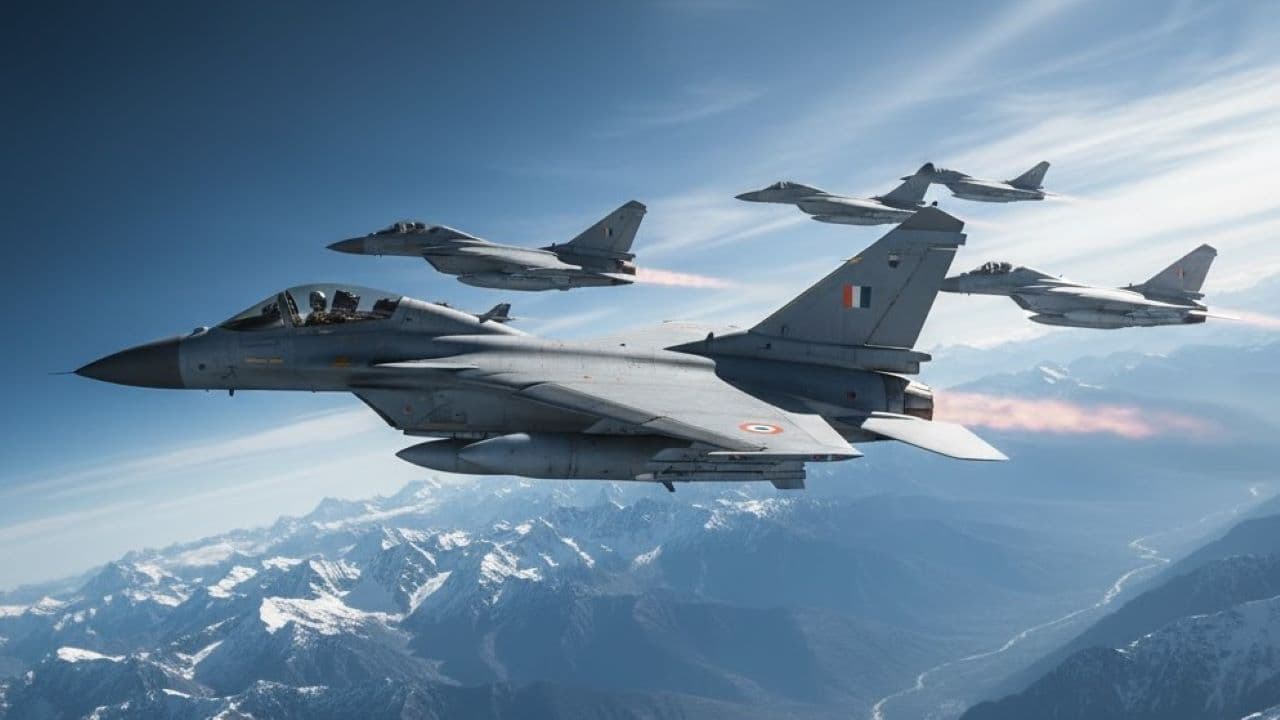India’s theatreisation reform, aimed at integrating Armed Forces, faces delays due to IAF’s inconsistent messaging. While IAF calls for caution and customised models, its reluctance to fully commit risks slowing vital defence restructuring.
India’s theatreisation debate is increasingly being shaped by the Indian Air Force’s inconsistent messaging—an ambivalence that threatens to slow the country’s most significant defence reform in decades. From cautioning against a “hasty rollout” at Ran Samvad to invoking “jointness” during the Air Force Day ceremony while citing Operation Sindoor’s success, the service’s oscillation between restraint and rhetoric has injected uncertainty at a time when clarity and consensus are vital for reform.
Mixed Signals, Missed Deadlines
Theatreisation represents India’s most ambitious defence restructuring since independence. It seeks to create unified, multi-domain commands that integrate the Army, Navy, and Air Force under a single operational umbrella for land, sea, air, cyber, and space. In an era of hybrid warfare, where threats span multiple domains simultaneously, such integration is not optional—it’s essential.
Yet, despite these imperatives, the Air Force’s public posture remains hedged. Instead of full endorsement, its tone is cautious, often emphasising incremental progress and warning against “copy-paste” adoption of foreign models. Beneath this prudence lies a deeper anxiety about losing institutional primacy. This dual messaging—acknowledging jointness but resisting structural reform—has sown confusion across policymaking circles.
When the leadership’s words diverge from intent, reforms lose traction. Theatreisation demands unified commitment across services to dismantle turf rivalries and bureaucratic inertia. Without that, India risks ending up with a diluted version of integration that fails to keep pace with the pace and complexity of modern conflict.
Ran Samvad: Caution or Contradiction?
At Ran Samvad 2025, Air Chief Marshal A.P. Singh voiced concern over replicating the U.S. or Chinese command models, arguing that India’s security landscape demands a customised approach. He proposed a “Joint Planning and Coordination Centre” as a measured step forward, warning that theatre commands could dilute air assets and compromise flexibility. These are legitimate concerns—especially given squadron shortages and the Air Force’s domain-specific needs. But publicly restating them risks appearing obstructionist. The repeated call for more studies and phased approaches can easily be read as a bid to slow-walk reform.
Air Force Day: An Ambiguous Endorsement
By Air Force Day, Singh’s tone shifted. He hailed Operation Sindoor as a testament to successful “joint planning and execution.” Yet, instead of endorsing theatreisation outright, he recast jointness as a matter of coordination rather than command integration. It was a rhetorical nod to reform—without conceding the control central to true joint command. This stance blurs the line between symbolic cooperation and genuine integration. Operation Sindoor demonstrated tri-service collaboration—but only within legacy command frameworks, not under a unified theatre command. Using such examples to argue against deeper reform risks perpetuating outdated structures.
The Cost of Delay: A Strategic Liability
Each year without theatreisation magnifies India’s operational vulnerabilities. Adversaries like China have long completed similar reforms and conduct seamless multi-domain operations. The Kargil Review Committee had warned over two decades ago that fragmented command structures lead to delayed employment of critical assets—particularly air power—compromising outcomes in fast-moving conflicts.
The financial burden is also immense. Maintaining 17 separate commands drains resources and duplicates effort. Calls for further deliberation only entrench inefficiency. India cannot afford bureaucratic procrastination when modern warfare demands agility and unity of effort.
A pragmatic way forward could be a task force to drive phased implementation—backed by strict timelines, progress audits, and government oversight. Without such urgency, theatreisation risks stagnating as an academic exercise rather than a strategic necessity.
Jointness vs. Theatre Command: A False Binary
Equating joint planning with theatre command integration is a flawed argument. True jointness cannot be achieved through coordination alone—it demands structural reorganisation of command and control. Coordination without integration breeds confusion, perpetuates rivalries, and fragments combat power.
The Air Force’s concerns about asset dilution are understandable but outdated. In contemporary warfare, centralised control without integration hampers response time and situational awareness. Real jointness can only emerge when authority and assets are delegated to theatre commands capable of multi-domain decision-making in real time.
Pragmatic Alignment
Viewed charitably, Air Chief Marshal Singh’s evolving tone reflects a tactical recalibration rather than resistance. He accepts theatreisation as inevitable but seeks to shape its contours into an “Indian model” compatible with existing realities. This approach mirrors how nations like the U.S. and China balanced service autonomy with integration through tailored frameworks—Unified Combatant Commands in the U.S. and joint theatre commands in China.
India’s challenge is to replicate such balance: retaining service strengths while ensuring unified operational coherence. Delays only increase exposure to hybrid threats—cyberattacks, precision strikes, and information warfare—that exploit the seams of disjointed command structures.
Integration Is Urgent, Delay Is Dangerous
The Air Force’s alternating caution and endorsement reveal an institutional dilemma that threatens to derail India’s defence reform momentum. Every deferment in the name of further study weakens national security. Theatreisation must move beyond rhetoric to rapid execution.
India’s military cannot afford symbolic jointness; it needs functional integration. True reform will come only when the Air Force’s cautious diplomacy transforms into decisive commitment. Joint working groups and phased pilot commands could bridge trust gaps—but the direction must be unmistakable. In the age of multi-domain warfare, hesitation is not prudence—it’s peril.
(Shashwat Gupta Ray is a multiple award-winning defence and strategic affairs journalist with over 20 years of experience in print and digital media. Previously Deputy Editor at Herald Group of Publications and Resident Editor at Gomantak Times, he has extensively covered major events, including the 26/11 Mumbai terror attacks and Maoist insurgencies. He is also the creator of the award-winning YouTube channel Uncovering India, which focuses on impactful social and developmental documentaries.)
